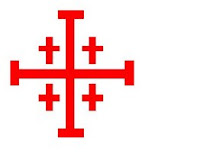As a Scottish Protestant boy I had
found understanding Mary to be a challenge.
Long ago, too long ago, a fine oil painting of Madonna and Child was
donated to my very Scottish Presbyterian Church creating a dilemma for the
elders. After some deliberation the
painting was placed upright on the floor of the boiler room, facing the wall.
The
problem of course was the Roman Catholic adulation of Mary. We instinctively felt that was out of
balance, but it would never occur to us that there was some middle ground.
That
there was some middle ground wouldn’t occur to most Episcopalians either. With the revision of our last Book of Common
Prayer all the saint’s days and the days commemorating Mary were shuffled from
our consciousness.
Who
is Mary? Who are the saints? We hardly
know.
The
Anglican Charles Williams, a friend of C. S. Lewis, and one of the Inklings,
writes,
'We begin then with the
Birth and with the Mother of God...
To her, for example, may be decently applied
all the titles of the Litany of Loretto... She is the Mother of Love, purissima most
pure, inviolata inviolate, admirablilis admirable; she is the Maid, virgo
veneranda venerable virgin, potens
powerful, Clemens merciful, she is the mirror of all mystical titles—speculum
iustitiae mirror of justice, sedes sapientiae seat of wisdom, causa nostrae
laetitiae cause of our joy, domus aurea house of gold, stella matutina morning
star, salus infirmorum health of the sick: Unless the identification of
marriage love with Christ be accepted, to press the similarity farther would
seem profane.
But any lover to whom the
application of the titles we have quoted seems natural and right may ... may so dare to apply in a very
real sense the titles which remain—Mater divinae gratiae Mother of divine
grace, Mater Salvatoris Mother of our Savior, Rosa Mystica mystical Rose,
Refugium peccatorum refuge of sinners, Regina Prophetarum Queen of
Prophets. Not certainly in herself is
she anything but as being glorious in the delight taken in her by the Divine
Presence that accompanies her, and yet is born of her; which created her and is
helpless as a child in her power.
However in all other ways she may be full of error or deliberate evil,
in the eyes of the lover, were it but for a moment, she recovers her glory,
which is the glory that Love had with the Father before the world was. Immaculate she appears, Theotokos God-bearer,
the Mother of God.”[i]
That is a mouthful for
an old Protestant boy, but Williams' understanding is orthodox; so I go to the
boiler room of my memory, take the picture from its dusty corner and gently
blow away the cobwebs of my Scottish antipathy and hang the painting on the
wall of the sanctuary of my mind.



No comments:
Post a Comment